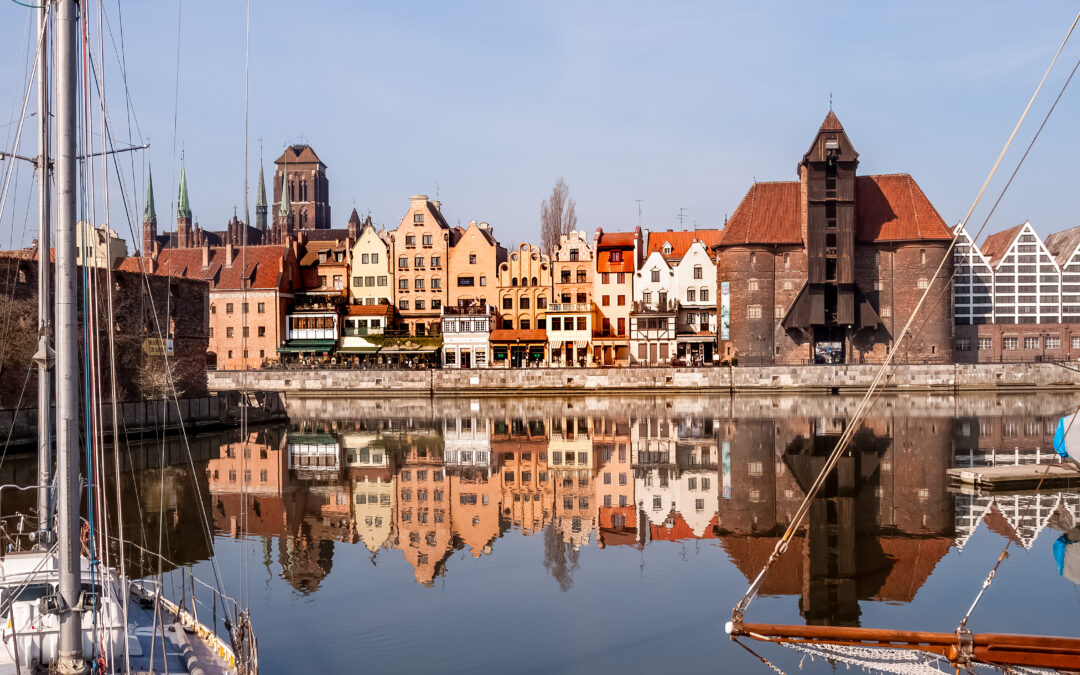Poland has expanded – on paper at least – after the introduction of new rules that include parts of the Baltic Sea as Polish territory. The change also means the coastal city of Gdańsk has replaced the capital Warsaw as the country’s largest in terms of surface area.
Overall, Poland is now 1,211.06 square kilometres (467.59 square miles) larger, according to newly released data from Statistics Poland (GUS), the state statistical office. It increased from 312,720 km² to 313,931 km².
Gdańsk, meanwhile, more than doubled in size, increasing its official area by over 417 km² to 683 km². That saw it surpass Warsaw, which has a surface area of 517 km2.
Thanks to the changes, Gdańsk’s neighbour Gdynia has become the third largest city in Poland after expanding by 256 km² to 391 km². The fourth largest is Kraków (327 km²) followed by another coastal city, Szczecin (301 km²).
Jesteśmy… najwięksi! 😯 Granica #Gdansk kończyła się na linii brzegowej, ale po zmianie przepisów, została przedłużona i rozciąga się do linii podstawowej morza terytorialnego 🌊 Tym samym powierzchnia naszego miasta wzrosła do 683 km²! ↘️ https://t.co/yYvGJpk8OE
📷 mosquidron pic.twitter.com/ve5hZu8ziP— Miasto Gdańsk (@gdansk) July 27, 2023
The surface area of the municipalities of Puck and Nowy Dwór Gdański and the resort of Sopot, located between Gdańsk and Gdynia, also increased by 287 km2, 240 km2 and 10.4 km2, respectively.
Previously, administrative borders of those seaside municipalities ended at the coastline, but according to new rules, in place since lst year, the line has now been set at the border of the territorial sea.
The trigger for the change was one entrepreneur’s plans to build a pier in Puck, 60 kilometres from Gdansk, reports broadcaster TVN24.
“When he came to the municipality for the necessary documents, it turned out that it could issue all the documents, but ending at the shoreline. As you know, to put up a pier, you have to go behind the shoreline,” Daniel Stenzel, spokesman for the mayor of Gdańsk, told TVN24.
Eastern Poland has seen its population decline while suburbs are attracting more residents, new census data shows
Poland's total population fell 1.2% from 2011 to 2021 (to 38.04 million) while Wrocław has overtaken Łódź as the country's third largest city https://t.co/xH3lxN0OeW
— Notes from Poland 🇵🇱 (@notesfrompoland) September 21, 2022
Poland was obliged to change the administrative boundaries of coastal municipalities by the United Nations Convention on the Law of the Sea, said surveyor Mariusz Meus, who runs the geodesy-focused Facebook page Honorowy Południk Krakowski (Honorary Kraków Meridian).
The process of incorporating the sea into the surface area of coastal municipalities began with a government decree in 2017 and was completed last year.
“[The coastal resort of] Jastarnia is 93% made up of…water! And Gdynia, a city of sea and dreams, is 66% made of sea,” said Meus, referring to Gdynia’s tagline. “The rest is land and dreams – in varying proportions.”

Notes from Poland is run by a small editorial team and published by an independent, non-profit foundation that is funded through donations from our readers. We cannot do what we do without your support.
Main image credit: Ermell/Wikimedia Commons (under CC BY-SA 4.0)

Alicja Ptak is deputy editor-in-chief of Notes from Poland and a multimedia journalist. She has written for Clean Energy Wire and The Times, and she hosts her own podcast, The Warsaw Wire, on Poland’s economy and energy sector. She previously worked for Reuters.



















